News
Coin Telegraphin 4 months
How to stake Solana (SOL) in 2025: A step-by-step guide for beginners
SOL

Key takeaways
Staking Solana allows you to earn passive income through staking rewards while participating in network governance.There is no minimum requirement for staking Solana, but the practical minimum is around 0.01 SOL.
All you need to start staking Solana is a SOL-compatible wallet.
Staking is considered one of the safer ways to participate in crypto ecosystems.
Solana is a blockchain network known for its fast transaction speeds and extensive ecosystem of decentralized applications (DApps). It also combines the proof-of-stake (PoS) and proof-of-history (PoH) consensus mechanisms, allowing you to stake its native currency, SOL (SOL), to earn rewards.
ThisSolanastaking guide walks you through the Solanastaking processand explains why staking could be a smart move, especially if you’ve been wondering how to earn passive income with SOL.
What is Solana staking?
Solana staking consists of locking SOL into acryptocurrency wallet. The process rewards you in the following ways:You earn rewards for staking SOL — a percentage based on how much you’ve staked, Solana’s current inflation rate (which fluctuates and is set to decrease every year), the total amount of SOL staked on the network, and how long you’ve been staking overall.
Staking gives you a say ingovernance, allowing you to vote on proposals that shape the Solana network. This approach prioritizes those with the largest investments, assuming they’ll act in the network’s best interest.
Staking increases security to create a stable investment environment. By staking, you’re directly contributing to Solana’s health and longevity. That said, if a few wallets stake large amounts, one could argue they’re centralizing the network.
If you earn rewards staking SOL, they’re paid out every two days — a period known as an epoch.
When staking SOL, you’re delegating funds to a Solana representative (avalidator.) Validators process transactions, produce blocks, and vote on network proposals. It’s essential to choose a validator that aligns with your vision for Solana, as they’ll be voting in your stead, much like an elected official in traditional governments.
Validator votes are stake-weighted. The more stake a validator has, the more weight their vote carries.
By delegating funds to a validator, you become a delegator. The validator’s job is to vote in the network’s best interest. It’s your job to choose reputable validators that keep the network safe.
Solana is one of the fastest blockchains in terms of transactions per second (TPS). It currently averages around 1,128 TPS, with a theoretical max of 65,000 TPS.
Staking Solana for beginners
There are a few things to consider as you prepare to stake Solana.Understanding staking methods
On the surface, staking is quite simple; however, there are actually two staking methods — each affects your SOL liquidity.Earn rewards while retaining control of your SOL’s liquidity. When youliquid stake, you receive liquid staking tokens (LSTs) equivalent to the amount of SOL you stake. You can use those LSTs in Solana’sdecentralized finance (DeFi)applications as you would if you weren’t staking funds.
Native staking is the original method that locks your funds away, allowing you to earn rewards and participate in governance. However, you cannot use your funds without pulling them out via the unstaking process. This process is beginner-friendly but limits what you can do with your SOL.
The difference between the two is flexibility. Native staking is less flexible but easier for beginners, while liquid staking retains your liquidity for use in DeFi and other applications.
Solana staking tax 2025
In the United States, Solana staking rewards are subject to incomeandcapital gains tax.You’re required to pay income tax on the value of SOL at the moment you unstake it. You also pay income tax on staking rewards when you gain the ability to withdraw them.
You’re required to pay capital gains tax once you sell or convert that SOL.
How to stake Solana
Now, let’s get into the Solana staking tutorial.Choose a Solana wallet
First, you need a wallet to store and stake your SOL.Most Solana wallets have built-in staking capabilities. This guide uses the Phantom Wallet for demonstration purposes.
Download Phantom Wallet from its official website by clicking the “Download” button.
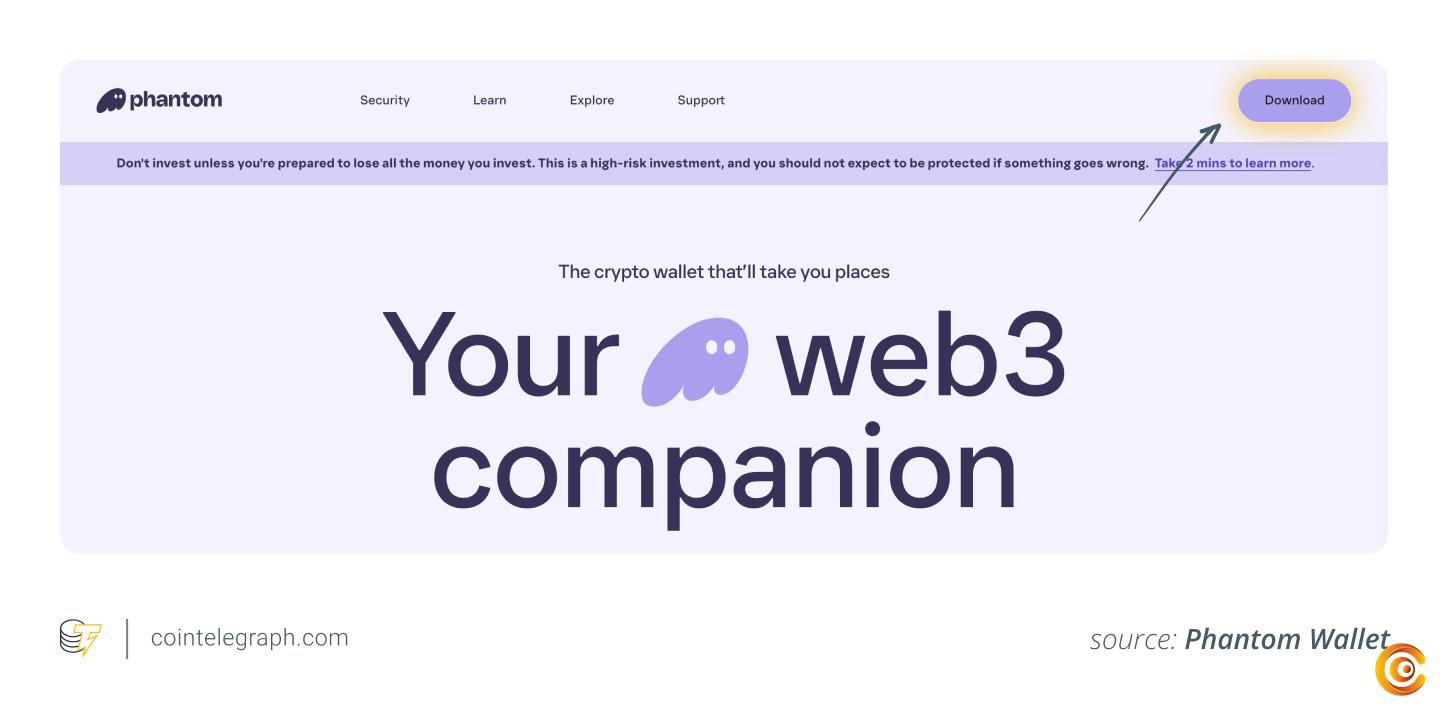 Next, click “Create a new wallet.”
Next, click “Create a new wallet.”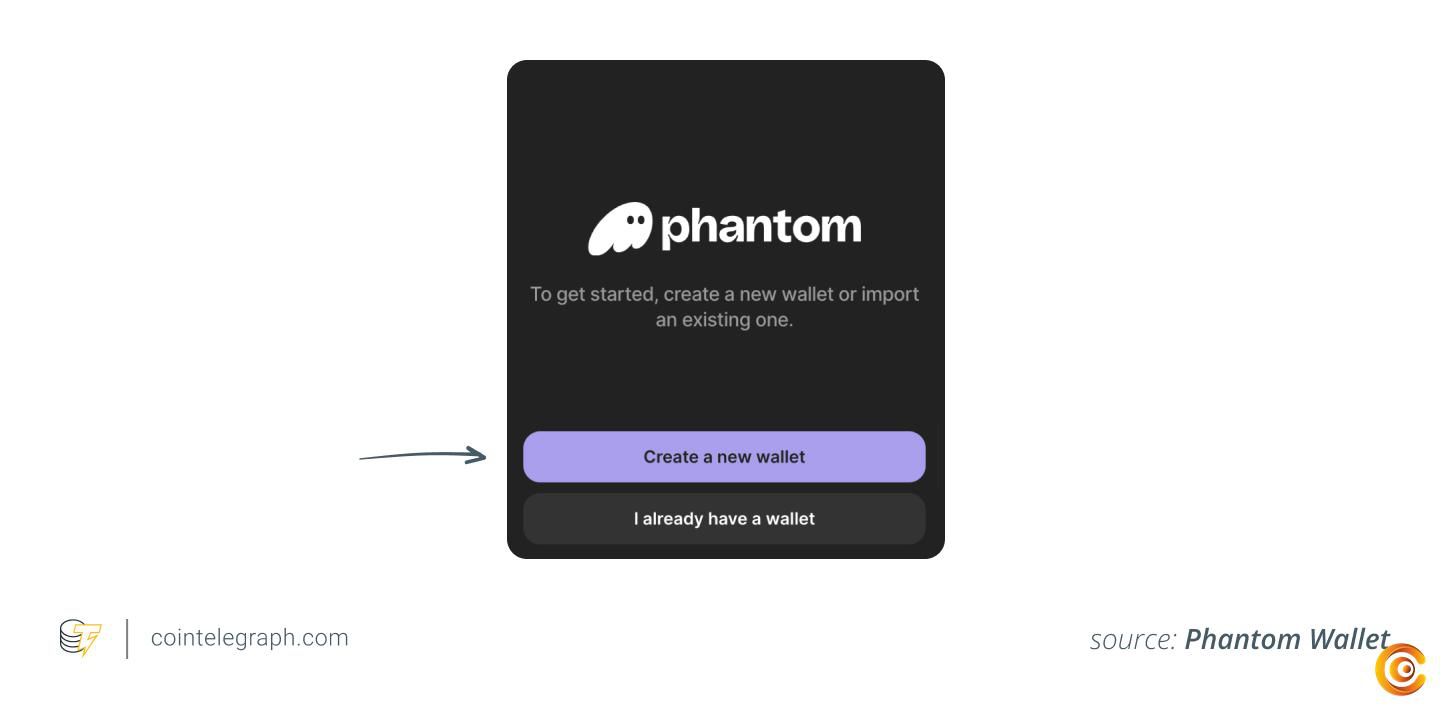 You’ll be asked to continue with an email or a seed phrase wallet. Click “Create a seed phrase wallet.”
You’ll be asked to continue with an email or a seed phrase wallet. Click “Create a seed phrase wallet.”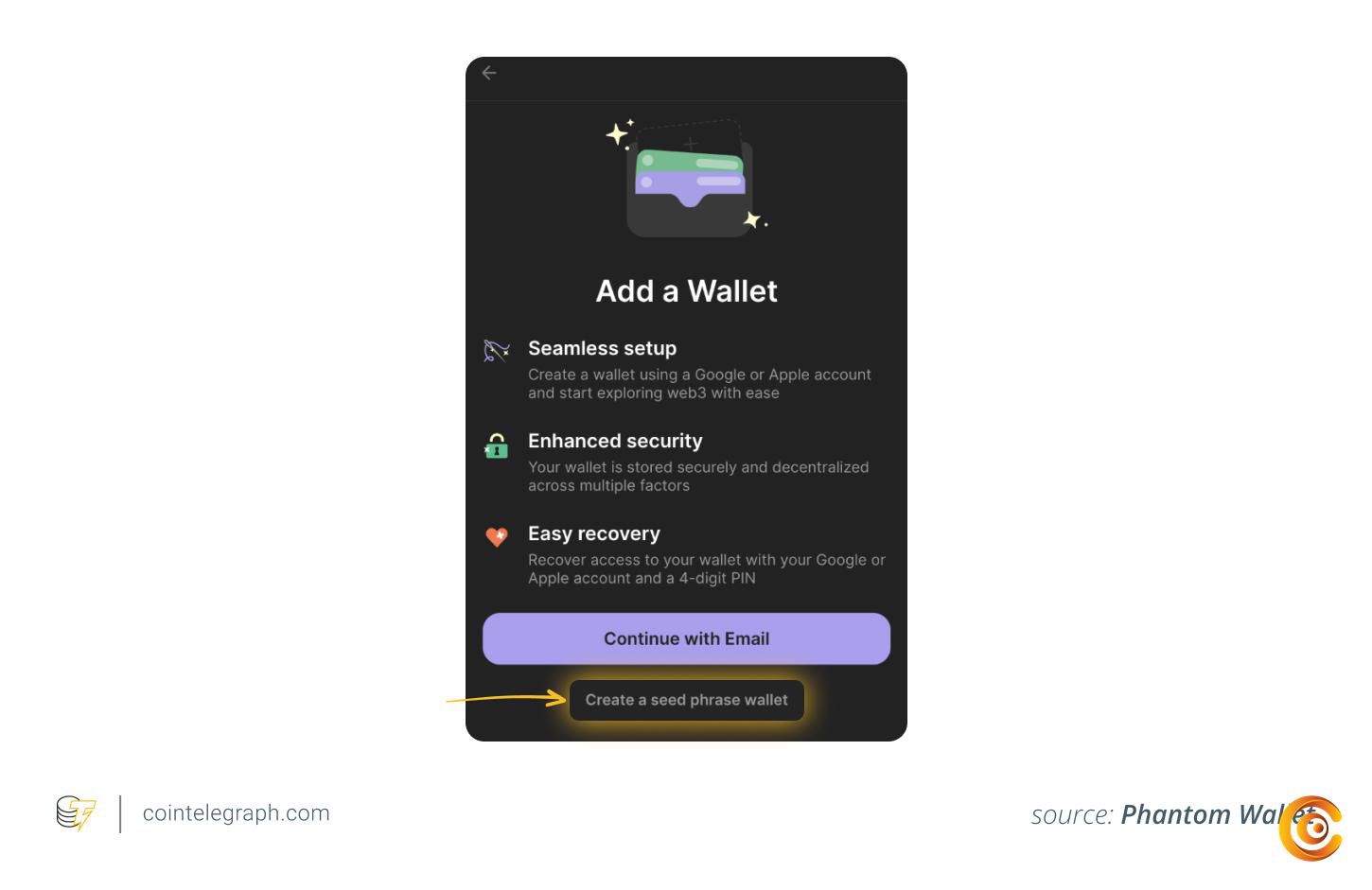 Enter a password, and proceed to the recovery phrase screen. Write down your recovery seed phrase on piece of paper, check the confirmation box, and click “Continue.”
Enter a password, and proceed to the recovery phrase screen. Write down your recovery seed phrase on piece of paper, check the confirmation box, and click “Continue.”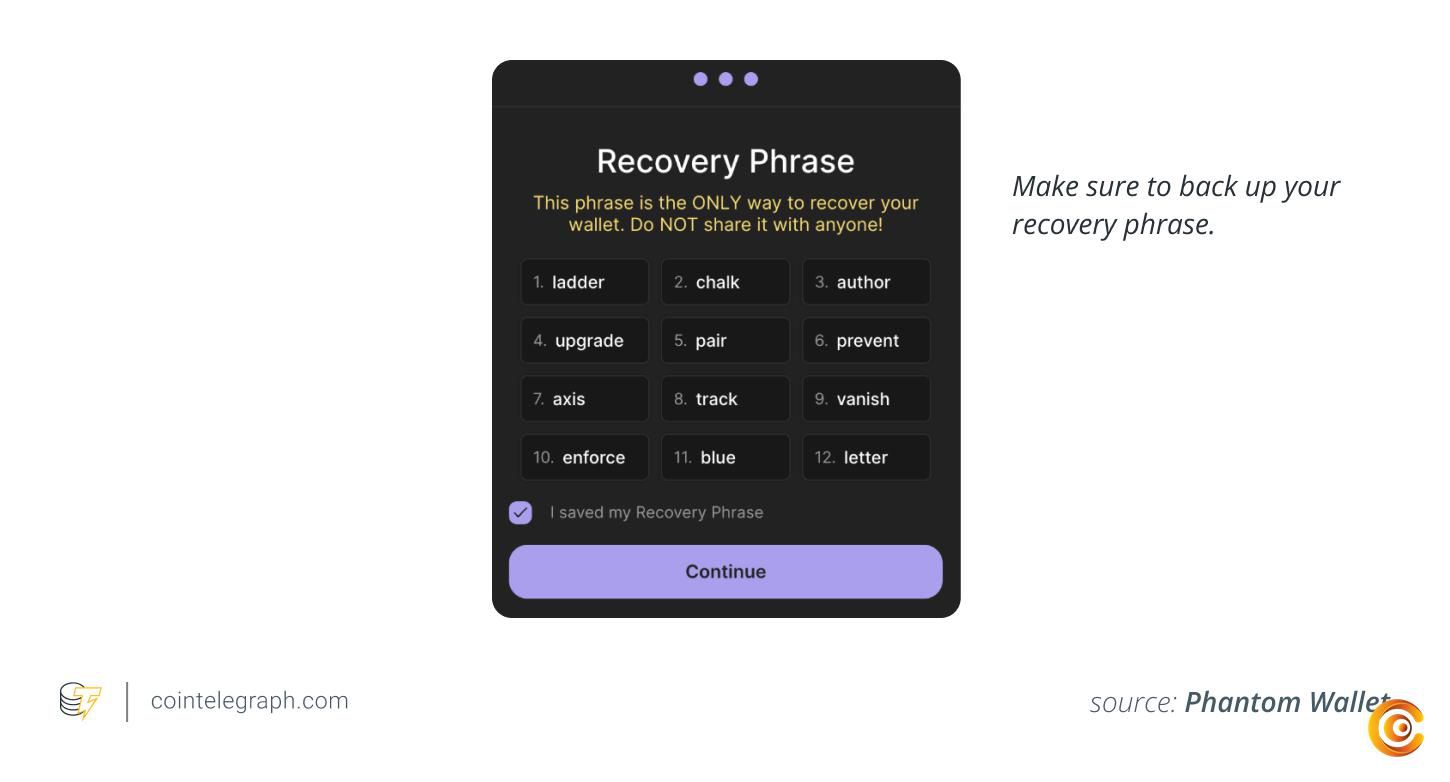 Create a username, click “Continue,” and you’ll have created a Solana wallet.
Create a username, click “Continue,” and you’ll have created a Solana wallet.Fund the wallet
Fund Phantom with SOL by either transferring SOL from another wallet or buying it with a debit/credit card via the “Buy” button.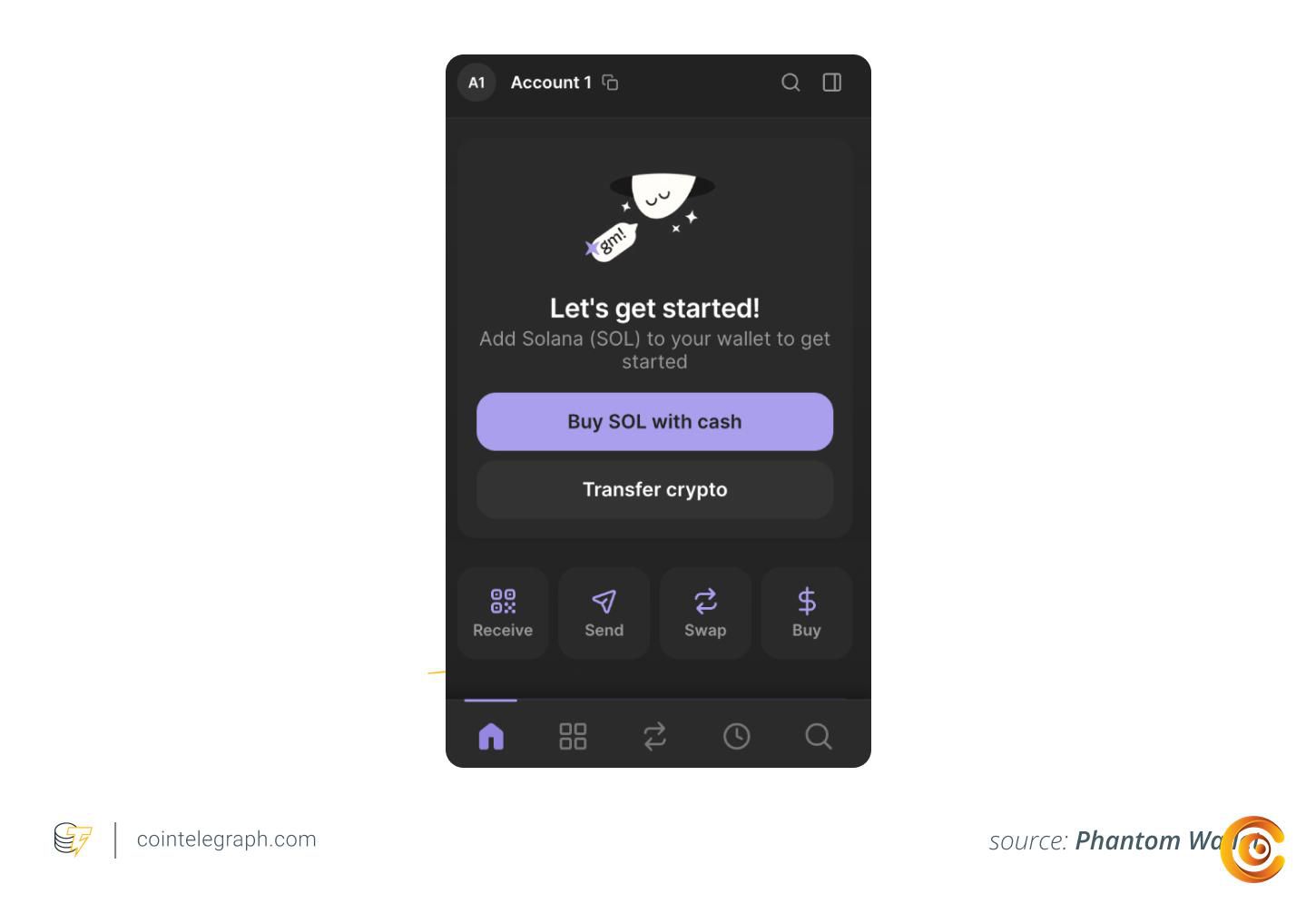 Phantom partners with companies such as Robinhood or Topper to facilitate card payments, allowing you to buy from within the wallet interface.
Phantom partners with companies such as Robinhood or Topper to facilitate card payments, allowing you to buy from within the wallet interface.After funding your wallet, it’s time to start staking.
Stake your Solana
Open your token list and click on “Solana.”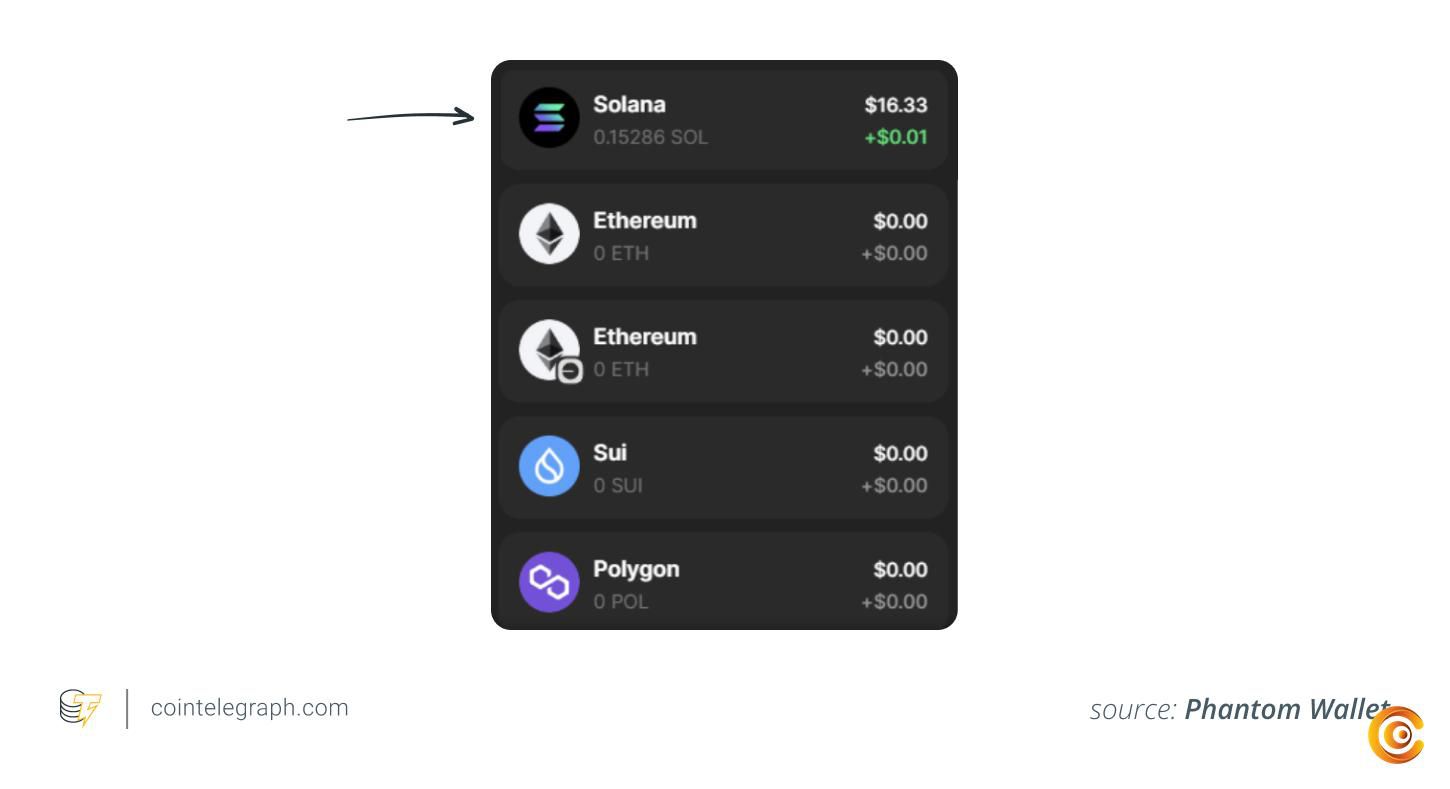 Select “Start earning SOL.”
Select “Start earning SOL.”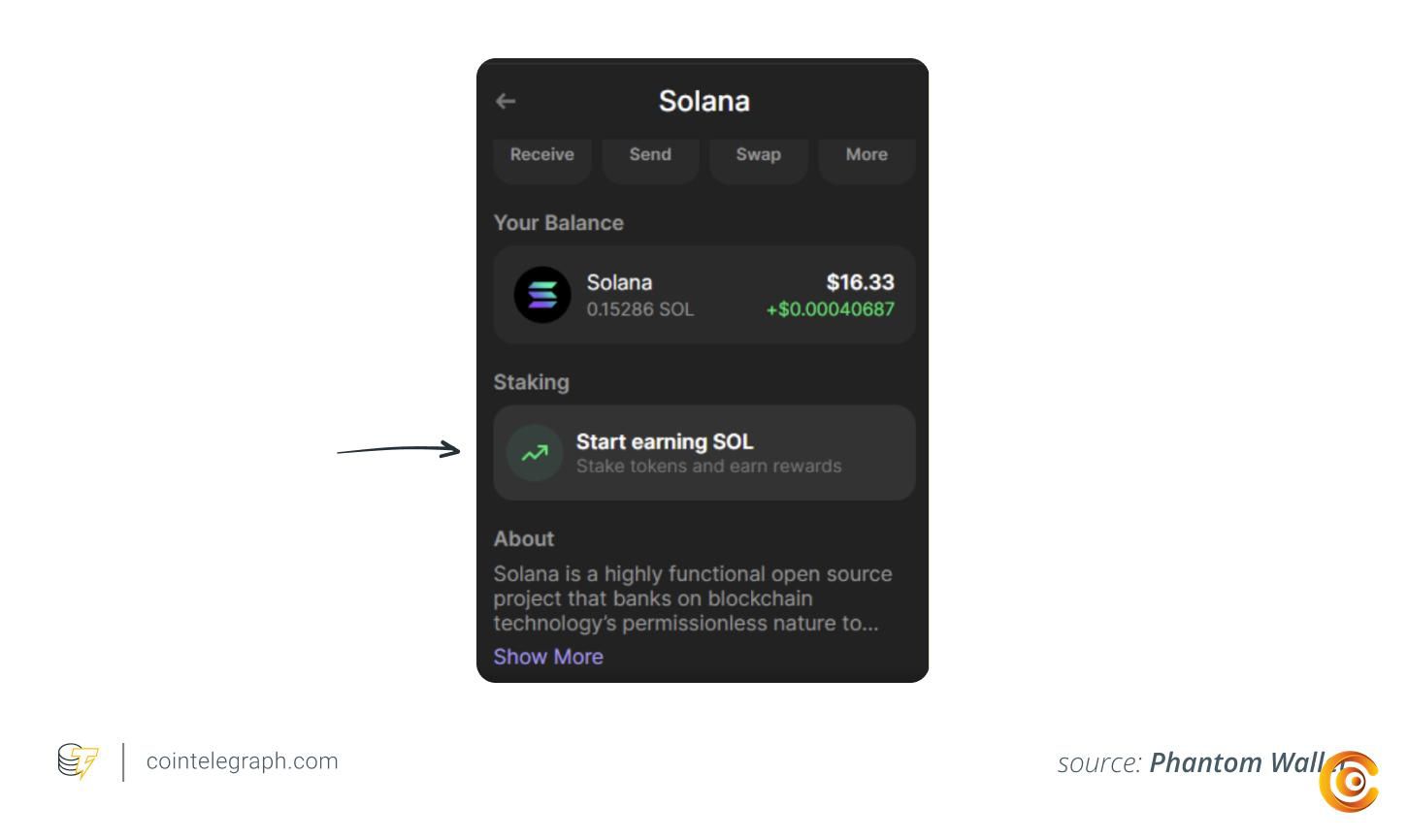 Now, choose between “Liquid Staking” or “Native Staking.”
Now, choose between “Liquid Staking” or “Native Staking.”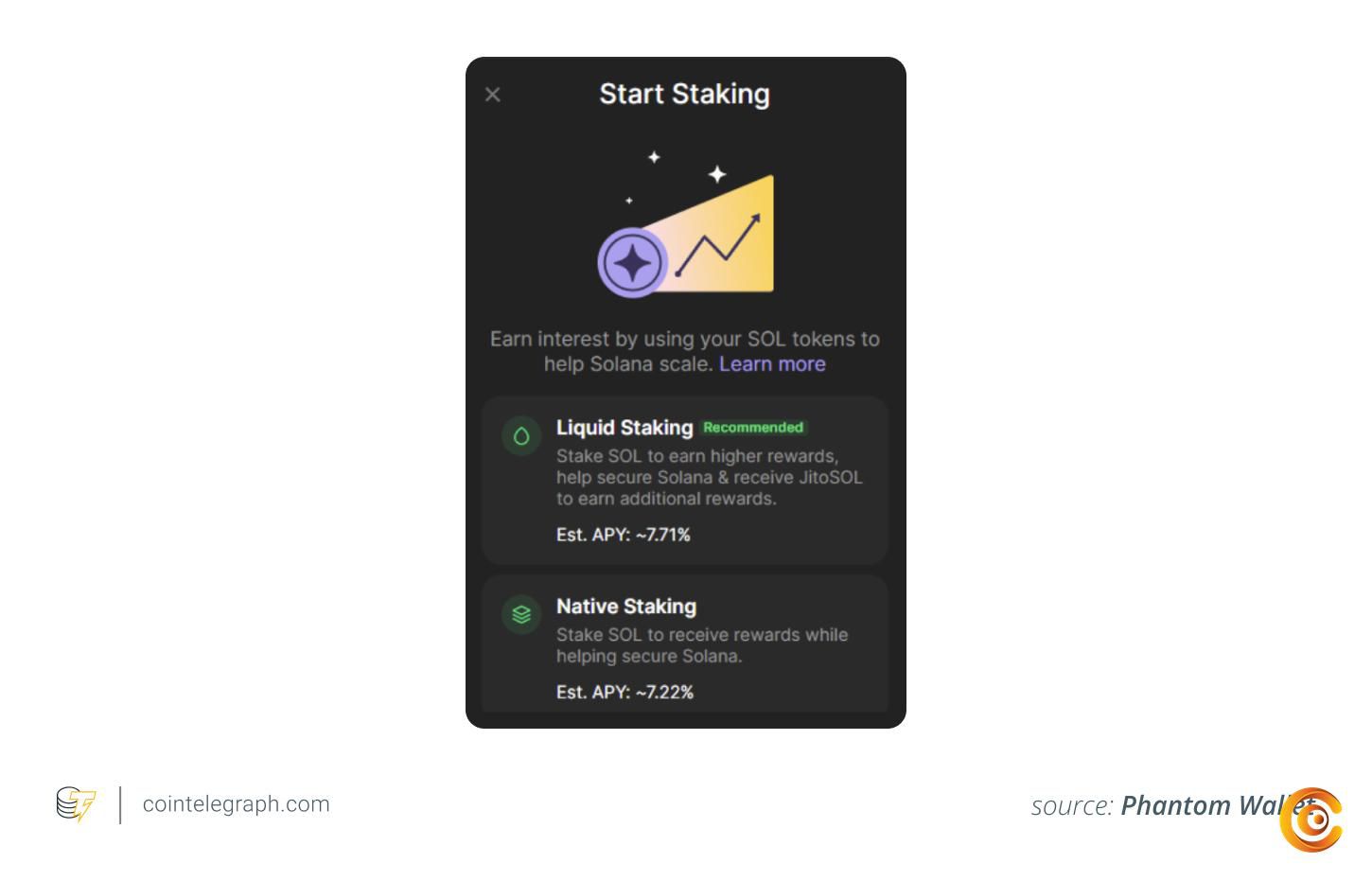 Liquid staking is typically done via a third-party provider. Phantom integrates with Jito’s liquid staking platform, enabling you to receive JitoSOL LSTs when you liquid stake.
Liquid staking is typically done via a third-party provider. Phantom integrates with Jito’s liquid staking platform, enabling you to receive JitoSOL LSTs when you liquid stake.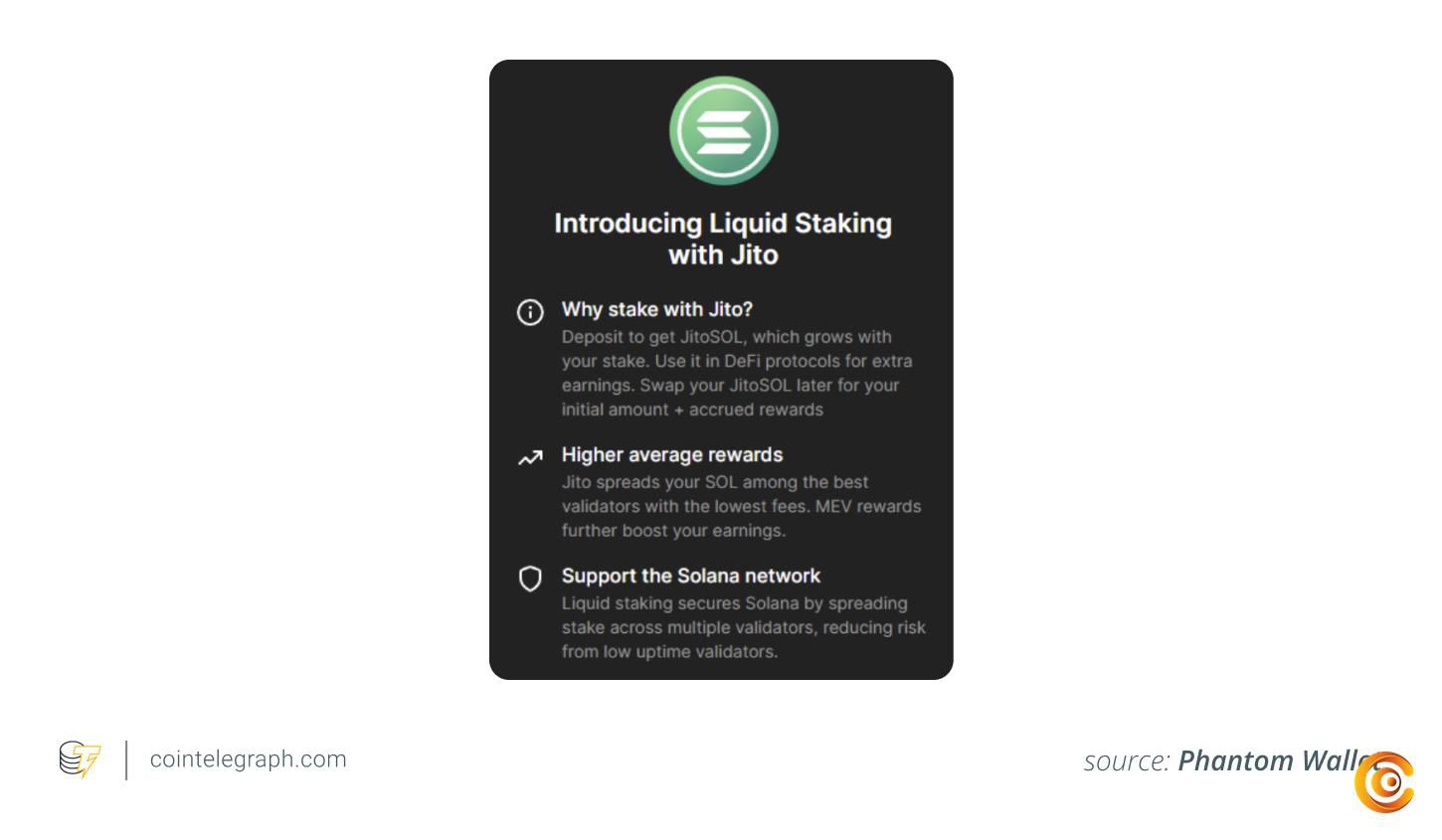 If you choose to liquid stake, Phantom will detail your estimated annual percentage yield (APY) and how much JitoSOL you’ll receive in return for staking.
If you choose to liquid stake, Phantom will detail your estimated annual percentage yield (APY) and how much JitoSOL you’ll receive in return for staking.JitoSOL will appear in your token list.
JitoSOL will appear in your token list.
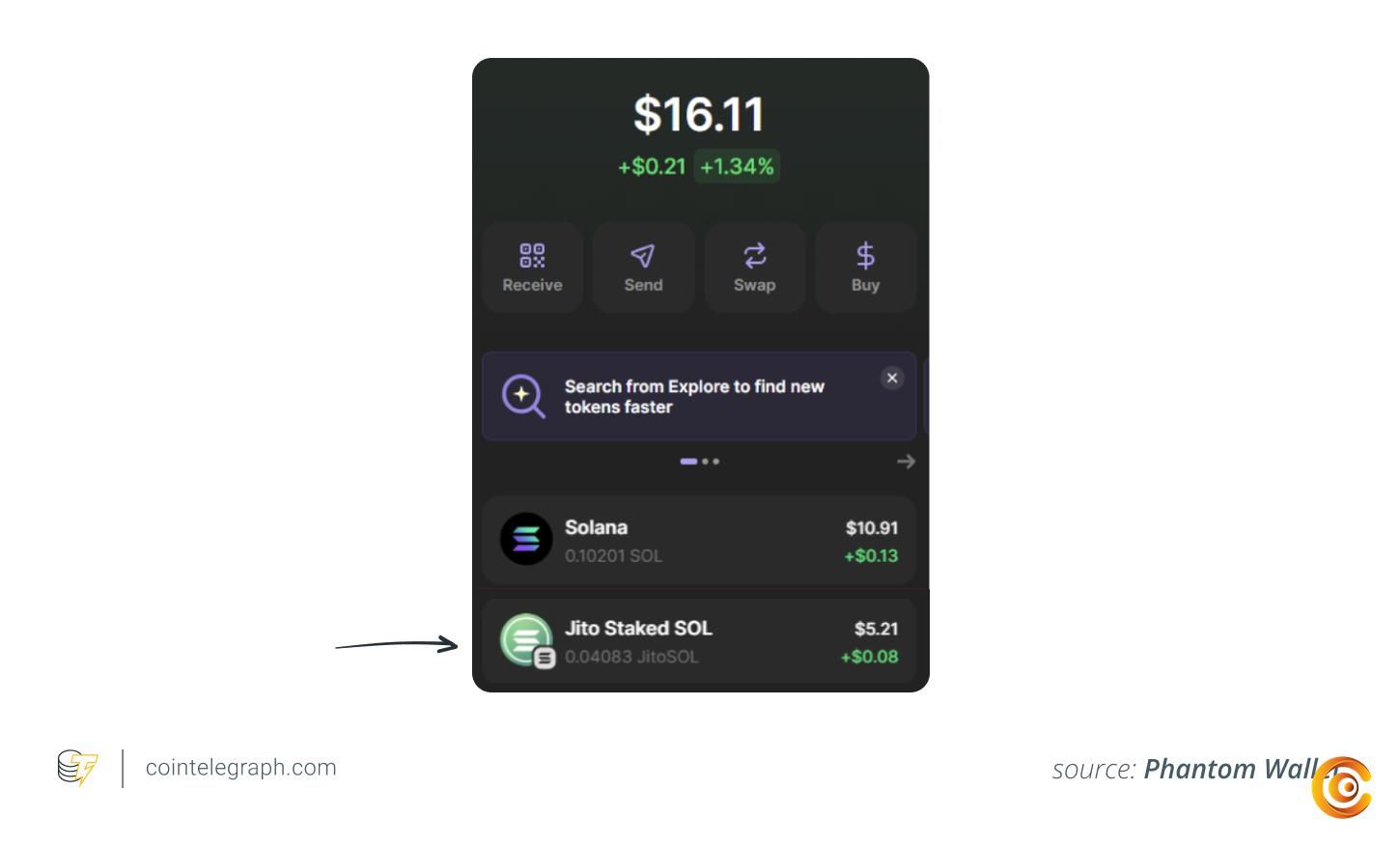 If you choose native staking, you must commit to a validator. Phantom will list validators in order of how much SOL is staked to them and their estimated APY.
If you choose native staking, you must commit to a validator. Phantom will list validators in order of how much SOL is staked to them and their estimated APY.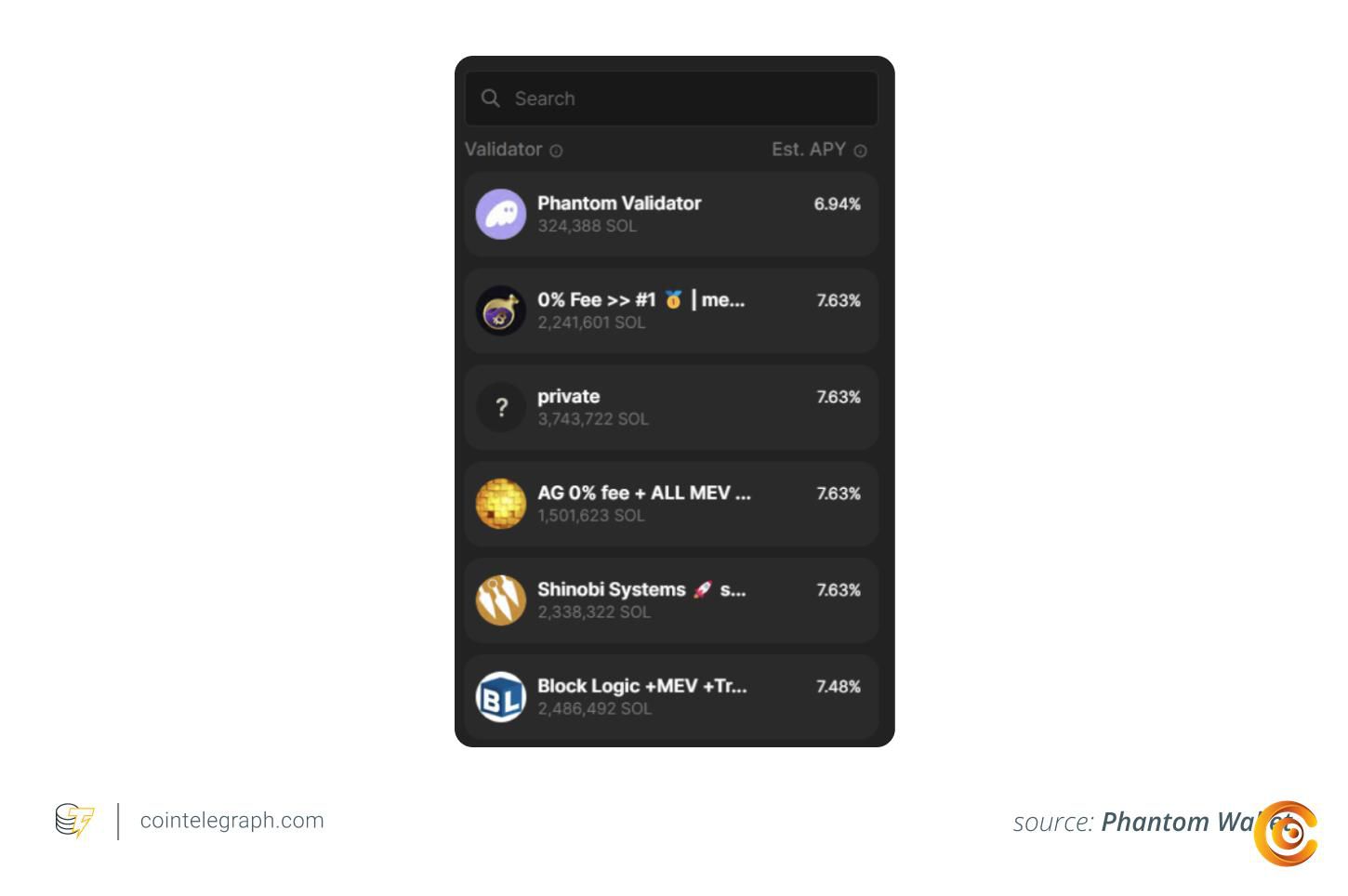 Select a validator, enter how much SOL you’d like to stake, and click “Stake.” The network will create your staking account, and you’ll start earning rewards in a few days.
Select a validator, enter how much SOL you’d like to stake, and click “Stake.” The network will create your staking account, and you’ll start earning rewards in a few days.Congratulations, you’re successfully staking SOL.
Validators who act out of turn or experience significant downtime will have their rewards slashed, also reducing the rewards of those who stake with the validator.
How to unstake Solana
Whether you choose liquid or native staking, here’s how to unstake your funds. You might unstake if:If you want to swap or sell your SOL, you must unstake the funds first.
If another network catches your eye, you’ll have to unstake your Solana funds to transfer them for staking on another network.
If your validator acts outside the network’s best interest, you may want to unstake and delegate to another validator.
Unstake natively staked tokens
To unstake natively staked tokens, click on “Solana” in your token list.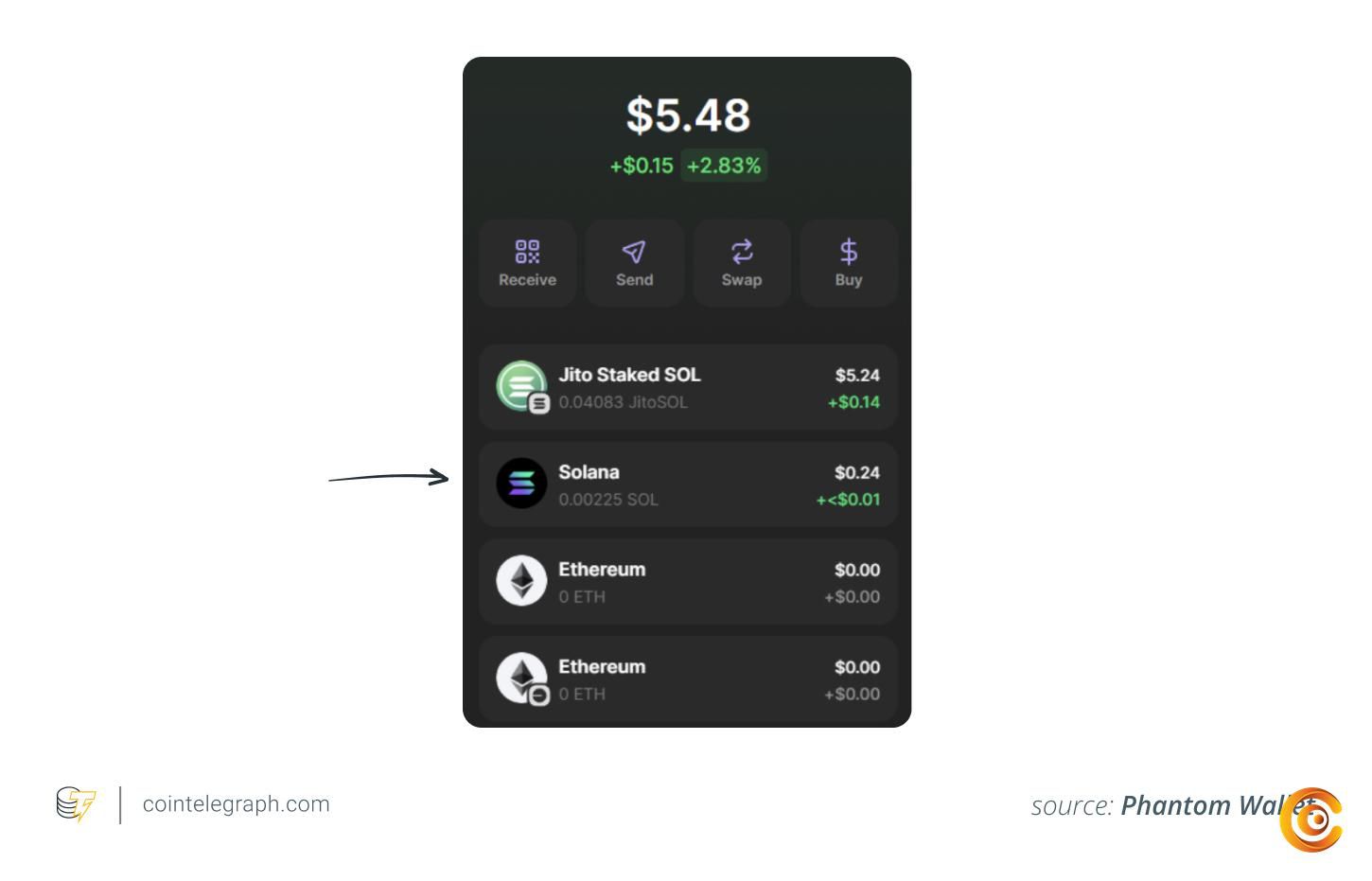 Next, click on “Your stake.”
Next, click on “Your stake.”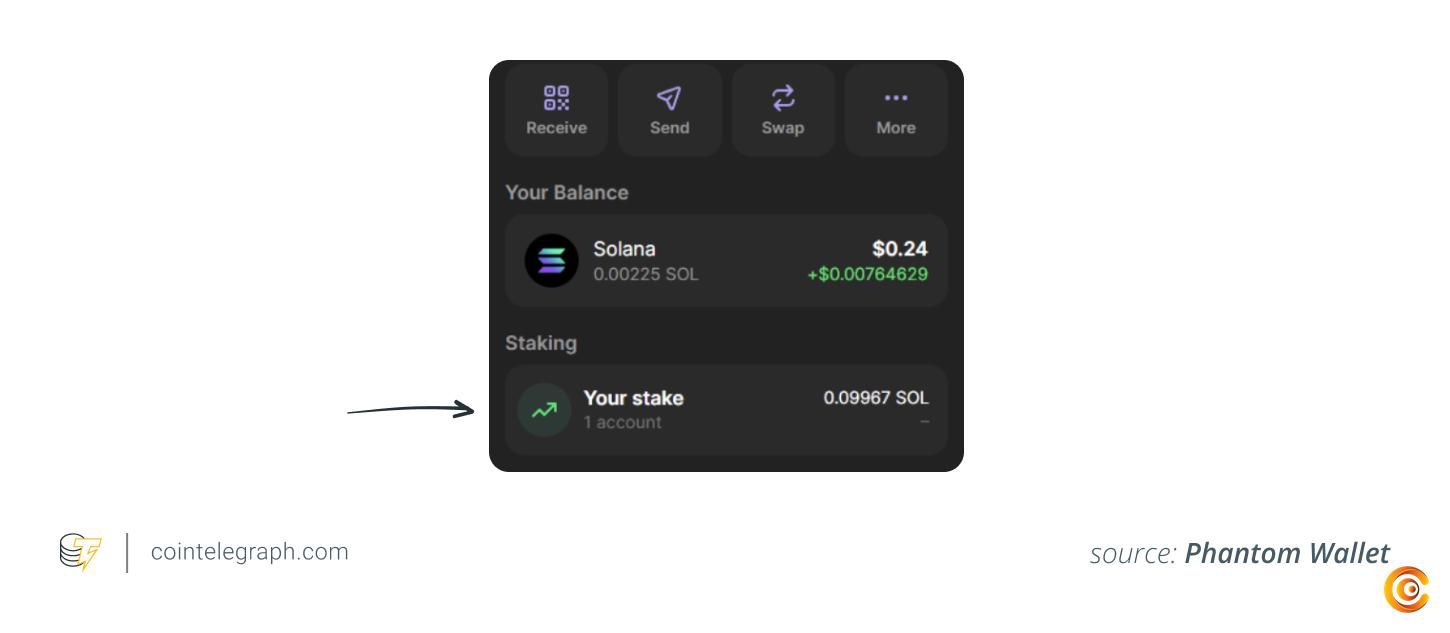 Select the validator you want to unstake from and click “Unstake.” Then, select “Withdraw Stake” to pull the funds back into your wallet. The validator will show “Inactive” once you’ve unstaked.
Select the validator you want to unstake from and click “Unstake.” Then, select “Withdraw Stake” to pull the funds back into your wallet. The validator will show “Inactive” once you’ve unstaked.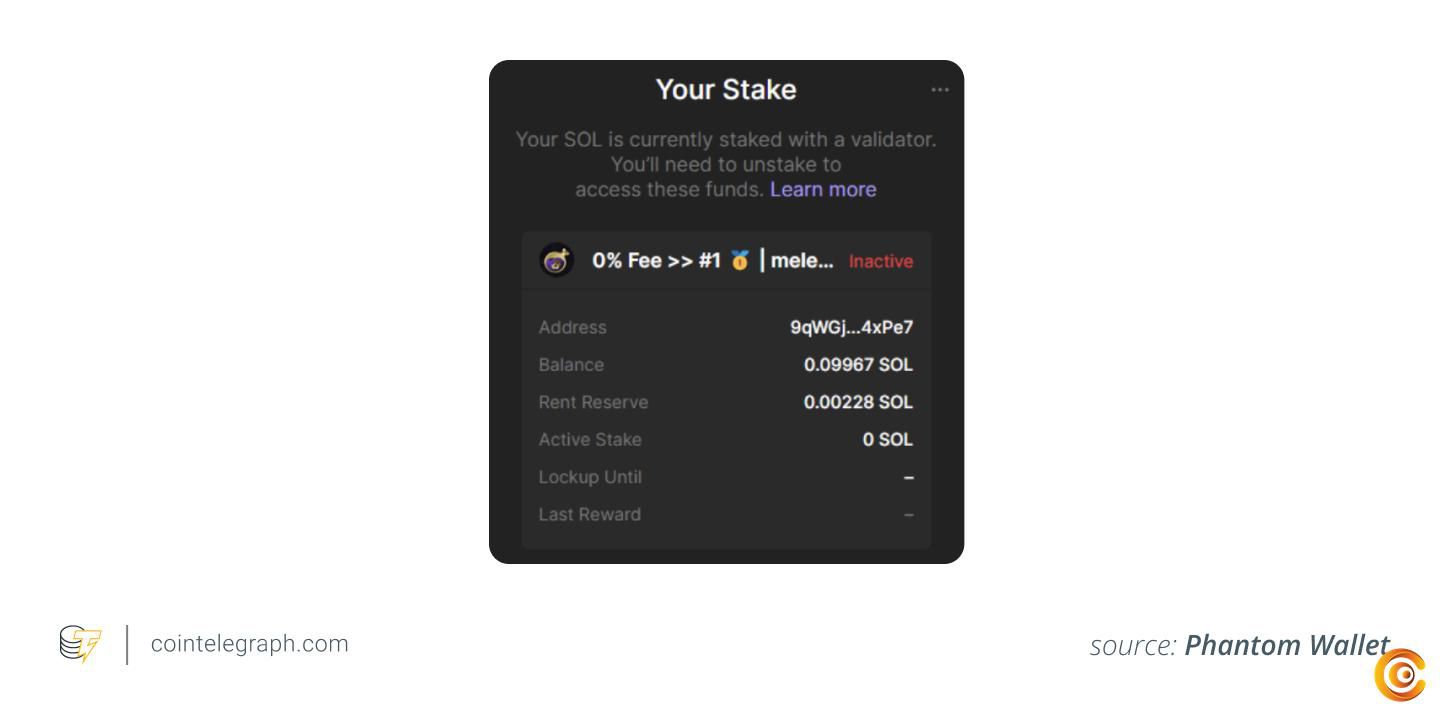
Unstake LSTs
To unstake your LSTs, select them in your token list.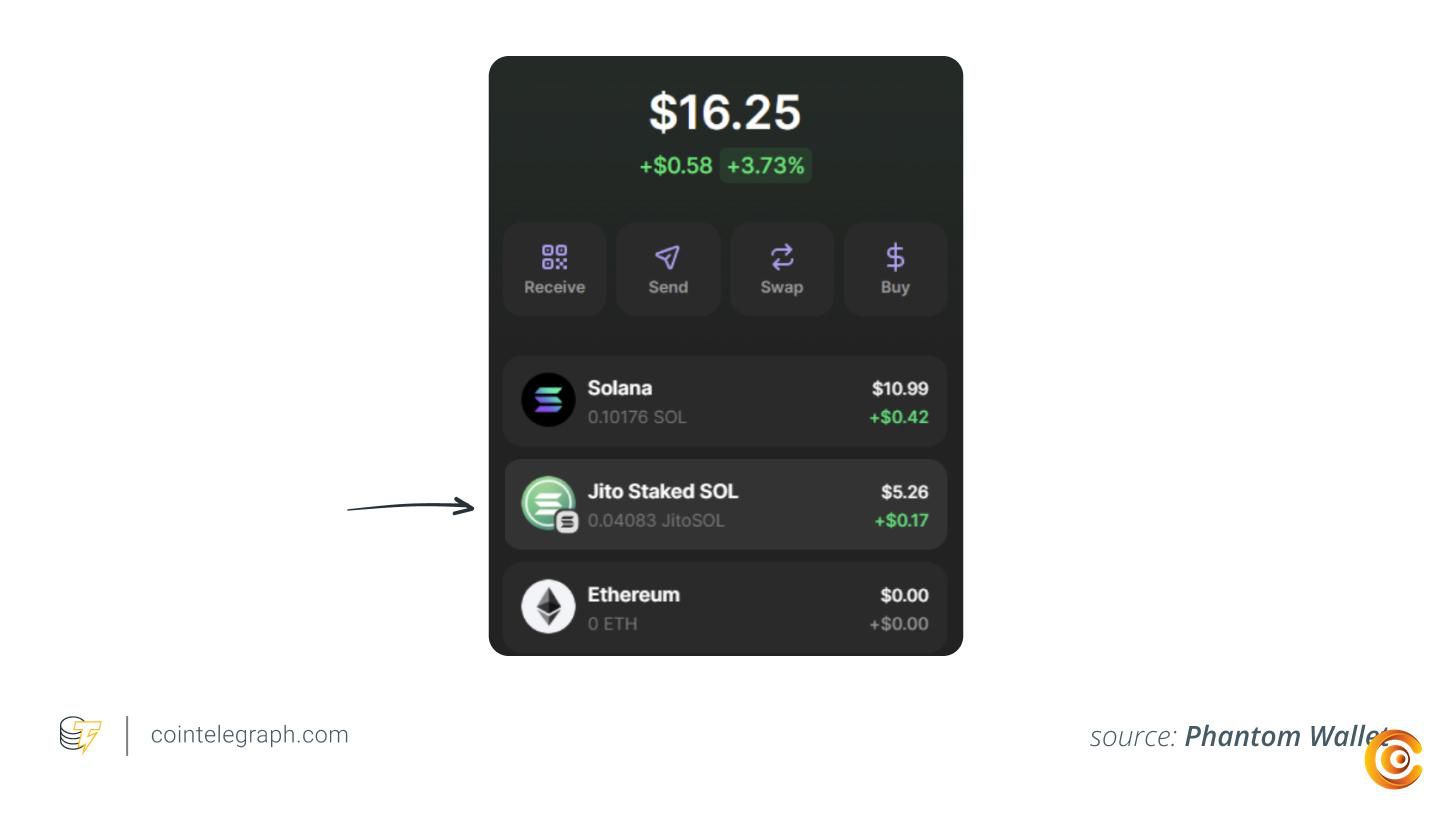 Click “More” in the options list, then select “Unstake.”
Click “More” in the options list, then select “Unstake.”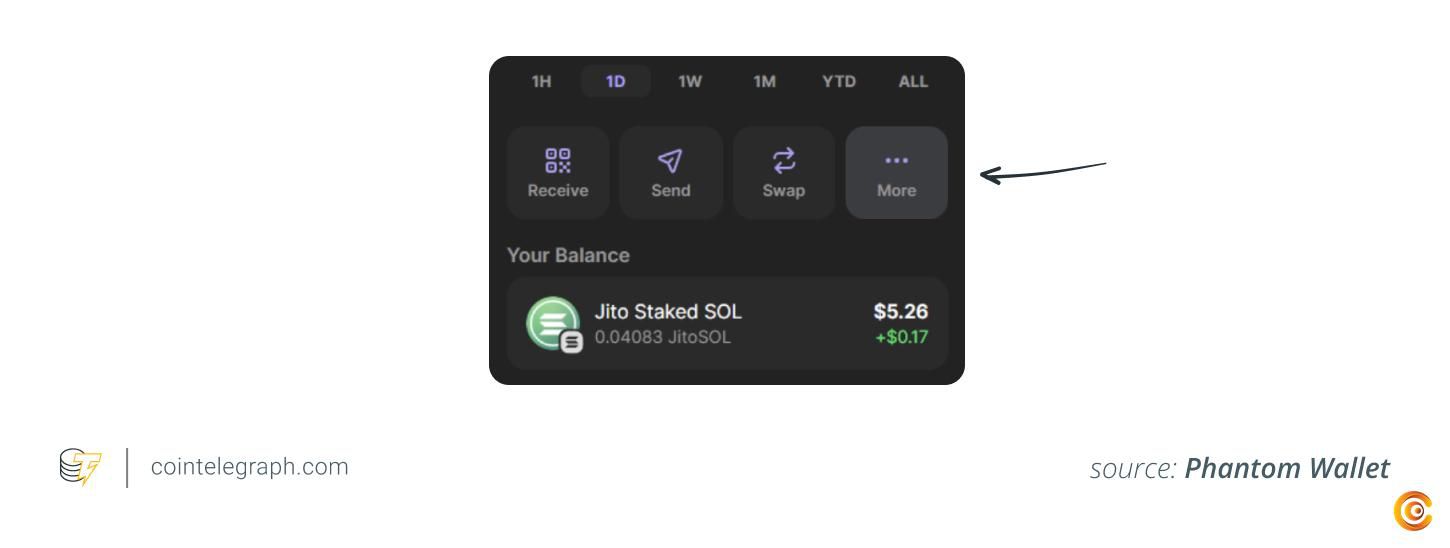 If you’re using Jito as your LST provider, clicking unstake will take you to Jito’s platform. Here, you have two options: unstake immediately or delayed unstaking.
If you’re using Jito as your LST provider, clicking unstake will take you to Jito’s platform. Here, you have two options: unstake immediately or delayed unstaking.Immediate unstaking costs a small fee, based on the amount you are unstaking. You can pay additional fees to prioritize your transaction or tip validators. Finally, you can adjust your slippage tolerance.
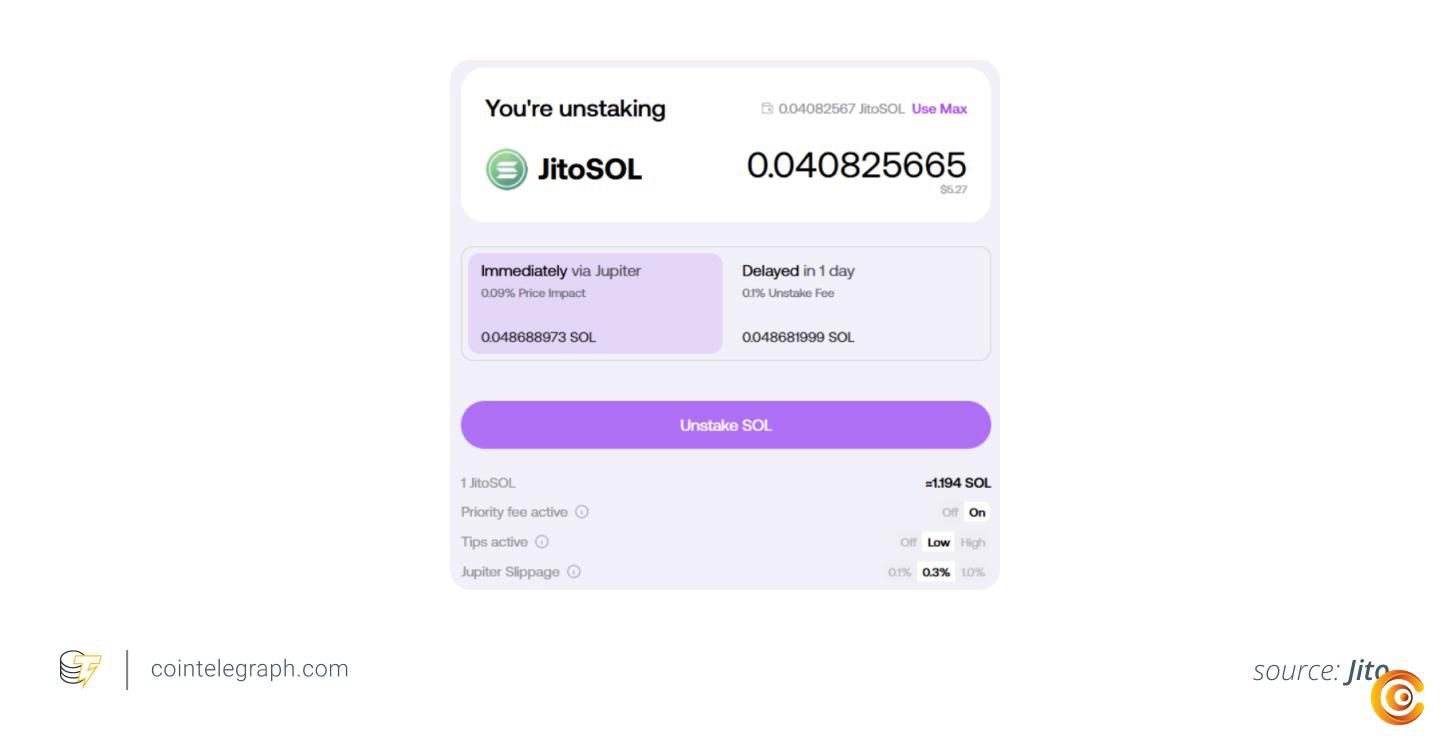 Delayed unstaking can range from one day to a week, depending on network congestion, but you pay a much lower fee. You also don’t have to account forslippage, as the network won’t prioritize your transaction.
Delayed unstaking can range from one day to a week, depending on network congestion, but you pay a much lower fee. You also don’t have to account forslippage, as the network won’t prioritize your transaction.Choose whichever option works best for you, and click “Unstake SOL.” The funds will appear in your wallet.
You can stake Solana with as little as 0.01 SOL, making it one of the most accessible PoS blockchain networks.
Is Solana wallet staking safe?
Staking Solana is relatively safe, but even if you know how Solana staking works, there are risks to be aware of:Solana is subject tomarket volatilityas much as any other cryptocurrency. The value of your staked SOL can fluctuate based on market conditions.
Validators can act out of favor with the network and may experience “slashing.” Slashing penalizes the validator’s rewards, which affects your rewards as well. Your initial investment remains safe, however.
Blockchain networks are exposed to bad actors 24/7, meaning they can be vulnerable to hacks at any time, putting your funds at risk.
Solana has had various outages over the years, often due to congestion. While this doesn’t necessarily mean your funds are at risk, bad actors could target the network during its weak moments.
So, while staking on Solana offers potential rewards, it’s important to understand that staking always carries risk. As with any investment, there’s a possibility of loss, so it’s crucial to evaluate your risk tolerance and take necessary precautions.
Comments
watchlist
Create Watchlist
You can add coins to the watchlist.
screener
Create Screener
You can create your custom screener.